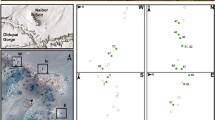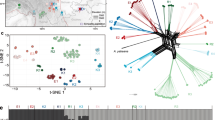Abstract
PROF. SOLLAS'S ingenious suggestion as to the origin of Oldhamia (NATURE, p. 515; Proc. R.D.S. p. 355) undoubtedly deserves very careful consideration; but it appears to me to leave some serious difficulties unexplained. For instance, the following occur to me after reading his paper and after examining two very fine specimens—one of O. antiqua, the other of O. radiala—recently placed in my hands by Mr. R. H. Scott, F.R.S.:(1) The “puckerings,” which are supposed to simulate the organism, are more definite in their boundaries than is usually the case with the ridgy or wavy “rucking up” which often occurs in phyllites as a first stage in the production of Ausweichungsclivage. (2) While I can trace down into the mass of the slate a certain puckering, I am at present unable to connect it with the Oldhamia visible on the upper surface. (3) As Prof. Sollas himself remarks, it is difficult to account for the peculiar branching form of Oldhamia. As it happens, during the last two or three years I have seen many examples of puckered phyllites, but never met with anything like Oldhamia. This difficulty in the case of O. anliqua anliqua seems to me almost insuperable. (4) In some cases I can detect two sets of markings crossing one another, so that the surface of the stone shows a reticulate structure, one set of lines being less definite than the other. This looks very much as if one branch of an organism were lying on the top of another; but I cannot account for it by mechanical movements alone. (5) The constancy of character in the markings is also a difficulty. One would expect every stage of development from the least to the most imitative. Now, though the Oldhamia is often indistinct, it certainly seems to me more like bad preservation than imperfect development of a structure.
This is a preview of subscription content, access via your institution
Access options
Subscribe to this journal
Receive 51 print issues and online access
$199.00 per year
only $3.90 per issue
Buy this article
- Purchase on SpringerLink
- Instant access to full article PDF
Prices may be subject to local taxes which are calculated during checkout
Similar content being viewed by others
Author information
Authors and Affiliations
Rights and permissions
About this article
Cite this article
BONNEY, T. Oldhamia. Nature 35, 581 (1887). https://doi.org/10.1038/035581a0
Issue date:
DOI: https://doi.org/10.1038/035581a0



